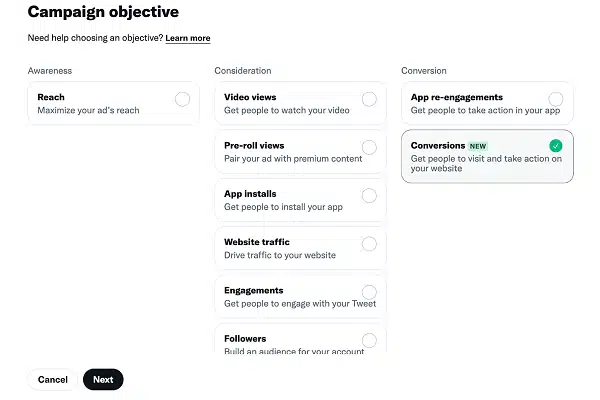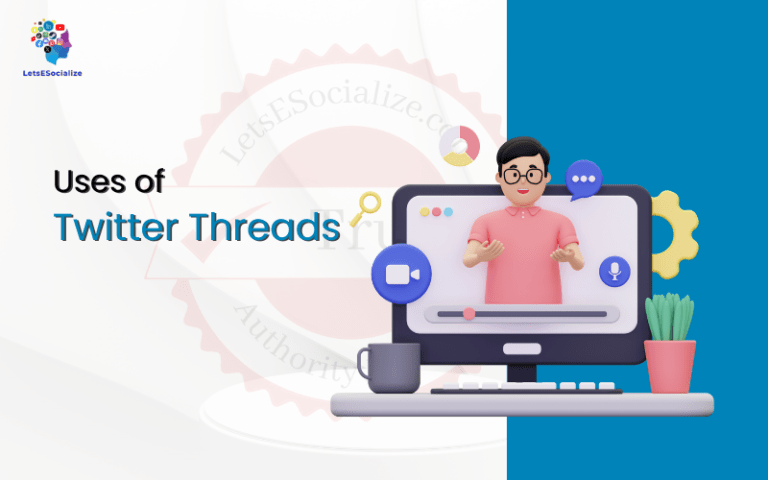Like most social platforms, Twitter relies heavily on advertising revenue. Targeted ads based on user data have become Twitter’s core business model.
However, this raises significant privacy concerns about how Twitter collects and leverages personal information for ad targeting. This article will examine Twitter’s Use of Personal Data for Ads.
Table of Contents
Introduction to Twitter Ads
With over 300 million monthly active users, Twitter offers advertisers access to a large, engaged audience. Key features of Twitter ads include:
- Promoted Tweets – Regular tweets promoted to wider viewership based on targeting criteria.
- Promoted Accounts – Promoting and highlighting specific Twitter accounts to gain more followers.
- Promoted Trends – Getting a chosen topic to trend across Twitter for more visibility.
Twitter offers advertisers various options to target ads using:
- Keywords – Targeting ads based on keywords in bios, tweets, and search queries.
- Interests – Placing ads in front of users who have shown interest in certain topics.
- Follower lists – Targeting ads to specified account followers.
- Locations – Targeting ads to users in set geographic areas.
- Device types – Reaching users on specific devices.
To understand Twitter’s use of personal data for ad targeting, we’ll examine its data collection practices, targeting capabilities, privacy controls, and compliance approaches.
Also read: How to Create Twitter Ads
Twitter’s First-Party Data Collection
When users create Twitter accounts, sign in, use the service, and interact with tweets and profiles, Twitter collects significant personal data and usage activity. This first-party data informs Twitter’s ad targeting and personalization.
Profile Information
Basic profile info like name, username, bio, location, website, and birthday are required or optional when creating a Twitter account. This provides identifiers, demographics, and interests that Twitter can use for ad targeting.
Tweets, Following, and Usage Data
As users tweet, follow accounts, like content, and actively use Twitter, the platform gains invaluable insights for ads. This includes:
- Tweet text, images, videos, and links
- Accounts followed and engagement with their content
- Hashtag usage indicates interests
- Browsing and search history
- Ad engagement, like clicks or conversions
Analyzing this usage behaviour allows Twitter to infer detailed user interests and characteristics.
Device and Connection Data
By collecting info on devices, IP addresses, operating systems, and mobile carriers, Twitter can target and analyze ads by user tech profiles.
Contact Information
If users import their address books or connect phone numbers for account security, this contact data improves targeting and relationships between accounts.
In summary, Twitter does not collect sensitive data like health or financial information directly. However, by aggregating various types of first-party data from user activity, profiles, devices, and connections, Twitter can compile detailed user profiles for ad targeting.
Inferring Interests and Attributes
While Twitter only directly collects first-party data from its platform, analyzing all this activity allows Twitter to make inferences about users. By examining the text of tweets, hashtags used, accounts followed, links clicked, and content engagement, Twitter can infer many user attributes like:
- Political leanings
- Ethnicity
- Income levels
- Purchase intents
- Health concerns
- Hobbies and interests
- Life events like marriage or new jobs
Making probabilistic guesses about demographics and interests based on behaviour is foundational to delivering relevant, targeted ads. But it also raises privacy issues when ads target sensitive attributes that users have not directly disclosed.
Partnerships for Enhanced Targeting
In addition to the rich first-party data from Twitter activity, the platform also partners with data brokers, marketers, and other third-party sources to enhance its ad targeting abilities.
Data Partnerships
Twitter allows advertisers to use partner data like offline purchase records or website behaviors to target ads on Twitter. This is facilitated via partnerships with data aggregators, marketers, publishers, etc.
Tailored Audiences from Partner Sites
If a user visits an advertiser’s website or app or views their ads elsewhere, Twitter allows targeting of that user for re-engagement on Twitter. This “tailored audience” data comes via partner sites.
Marketing Platform Integrations
Twitter partners with major marketing clouds, CRMs, and analytics providers. This allows advertisers to combine their customer data with Twitter ads.
Via these partnerships, Twitter can leverage far more data than just its internal first-party signals to target and measure ads. However, this raises transparency and consent issues around external data usage.
Targeting Capabilities for Twitter Ads

Equipped with extensive first and third-party data signals, Twitter offers advertisers nuanced options to target Twitter ads. Targeting capabilities include:
Basic Targeting Options
- Location
- Age
- Gender
- Language
- Device types
Interests and Follower Targeting
- Inferred user interests based on activity
- Targeting followers of specified accounts
Remarketing and Engagement
- Users who previously engaged with an advertiser’s tweets, profile, website, emails, etc.
- Lookalike audiences modeled off a company’s existing customers
Keyword and Conversation Targeting
- Tweets or search queries containing specified keywords
- Ongoing conversations around certain topics
Matched Audiences
- Matching advertiser-provided customer lists like emails or phone numbers to target associated Twitter accounts
Exclusions
- Excluding users who follow or engage with certain accounts
- Excluding users matched to provided lists of emails or device IDs
This expansive range of targeting options allows advertisers to analyze Twitter’s user data and reach narrow, customized audiences.
Also read: Targeting Options in Twitter Ads
Ad Transparency for Users
To provide visibility into how ads are targeted, Twitter offers transparency options for users:
Why You’re Seeing This Ad
Clicking the “Why am I seeing this ad?” icon on Twitter ads surfaces:
- Specific targeting parameters used
- Advertiser profile
- Ability to mute, report or get support
This reveals the data and interests driving an ad.
Your Twitter Data Settings
In Personalization and Data settings, users can see:
- Inferred interests Twitter associates with their account
- Advertisers who have included them in tailored audiences
- Partner sites sharing data with Twitter
Reviewing this information provides insight into how activity translates into ad targeting.
Ad Transparency Center
Twitter’s Ad Transparency Center site explains:
- How each type of Twitter ad works
- Targeting options available to advertisers
- How user data improves relevance
- Controls available to users
This hub brings useful transparency around ad practices.
Twitter does provide some visibility into the inner workings of its ad targeting systems. But full transparency remains to be discovered, given the complexity of Twitter’s data collection and analysis.
User Controls Related to Ads
To meet legal requirements around user consent and privacy rights, Twitter provides controls related to ads:
Personalization and Data Settings
In this section, users can:
- Turn off personalized ads based on Twitter data
- Manage data sharing with specific partner categories
- Modify the interests of Twitter associates for targeting
- See advertisers adding you to tailored audiences
This covers ad personalization, external data use, and interest controls.
Ad Topics
Users can limit ads on sensitive topics like:
- Alcohol
- Gambling
- Politics
- Social issues
- Pregnancy/parenting
Marketers must avoid restricted categories.
Ad Blocking Software
Though Twitter discourages ad blockers, technically savvy users can use browser extensions to hide Twitter ads.
Twitter Blue Ad-Free Access
Subscribing to Twitter Blue removes ads from Twitter on supported apps and devices.
So, users do have options to limit ad targeting, but controls remain relatively high-level compared to the granular data Twitter leverages behind the scenes.
Also read: Enjoying an Ad-Free Experience with Twitter Blue
Legal Basis and Compliance for Ad Targeting
Using personal data for advertising poses legal and ethical risks if done irresponsibly. Twitter relies on the following to enable legally compliant ad targeting:
Consent for Personalization
For personalized ads based on user interests and activity data, Twitter obtains clear opt-in consent through its personalization controls. Users can revoke this consent at any time.
Legitimate Interest for Basic Ads
Non-personalized ads based only on context like keywords or location rely on legitimate interest legal basis rather than consent.
Special Categories Opt-In
Ads cannot target special categories like ethnic or health data without explicit opt-in consent.
Signed Data Processing Agreements
Contracts govern data access for ad partners. Users can opt out of data sharing.
Ad Policies Against Discriminatory Targeting
Twitter policies prohibit inappropriate targeting like racial profiling or predatory ads.
Oversight Bodies and Controls
Internal teams, external committees, and machine learning supervise and practice for risks.
Privacy and Ethical Impact Assessments
New ad products undergo review for data protection, transparency, and bias issues.
Platform Interoperability and Portability
Users can access their Twitter data and transport it to other services.
So Twitter aims to enable relevant ad targeting while balancing user privacy through policy, legal, technical, and ethical measures. But gaps likely remain despite these efforts.
Transparency Around Ad Targeting Algorithms
Much of Twitter’s ad targeting relies on proprietary machine learning algorithms that analyze user data to profile interests and make targeting predictions. But how exactly do these AI systems work?
Limited Algorithmic Transparency
Twitter needs to provide more visibility into the internals of its ad-targeting models beyond high-level explanations of data inputs and outputs. The models themselves remain black boxes.
Proprietary Confidentiality
As a competitive asset, Twitter maintains secrecy around the mathematical details and training methodologies for its targeting algorithms.
Difficulty Explaining Complex Models
The advanced neural networks underlying Twitter’s ad systems have millions of opaque parameters. The company may need help explaining exactly how predictions are made.
Tradeoffs Between Accuracy and Explainability
Simpler, more interpretable models often cannot match the performance of black-box neural nets, creating business incentives to use the most accurate targeting possible.
So, while transparency around Twitter’s ad targeting algorithms is limited, this opacity is typically given commercial incentives and genuine technological difficulties in making AI fully interpretable.
Criticisms and Concerns Around Twitter’s Ad Targeting
Twitter’s extensive collection and analysis of user data for ad targeting poses risks that merit discussion.
Lack of Meaningful Informed Consent
Do users genuinely understand what they consent to regarding using their data for Twitter’s ads? Consent may be superficial, given the systems’ complexity.
Intrusive Hyper-Personalization
Twitter ads reach users with uncanny precision based on extensive profiling. This level of micro-targeting can feel invasive.
Discriminatory and Abusive Targeting
Advertisers could exploit Twitter’s targeting tools for predatory ads, scams, or exclusion of disadvantaged groups.
Political and Social Manipulation
Twitter’s ad micro-targeting enables the spreading of disinformation or polarization tailored to specific groups’ biases.
Surveillance Capitalism
The commodification of user data primarily for profit optimization raises objections that people’s humanity and privacy are being violated.
So, while Twitter continually works to enhance privacy and ethics, inherent tensions remain between targeting accuracy, transparency, and user control. However, steps toward responsible data minimization could mitigate concerns without sacrificing relevance.
Twitter’s Progress Enhancing Ad Transparency and Privacy
Acknowledging public concerns, Twitter has pursued various initiatives to improve transparency and give users more control over ads:
More Granular Ad Targeting Options
Twitter has scaled back highly precise categories for advertiser targeting and profiling. Advertisers must now choose from broader interest categories.
Political Ad Transparency
Twitter maintains ad transparency centres for key countries that track spending by political advertisers.
Privacy Review Board
An internal board of diverse experts provides guidance and oversight on product development with privacy implications.
Algorithmic Fairness Audits
Twitter is working with external researchers to audit its algorithms around ad delivery and other areas for fairness issues and biases.
Expanded Data Access and Portability
Users have increased the ability to download their Twitter data for portability to other platforms.
Partnerships with Academic Researchers
Twitter provides access to data for selected researchers to independently analyze topics like algorithmic bias in the public interest.
So Twitter is responding to public and regulatory pressure by implementing meaningful reforms to enhance advertising transparency, accountability, and privacy. But scepticism still needs to be made on whether the dominant ad-driven business model can align with users’ best interests.
Key Takeaways on Twitter’s Ad Targeting Practices
Some key high-level takeaways on how Twitter leverages user data for targeted advertising:
- Twitter collects extensive first-party profile, activity, device, and network data to inform ads.
- Analyzing this data allows Twitter to infer detailed user interests and attributes for targeting.
- Twitter supplements its first-party data with partnerships offering enhanced targeting signals.
- Powerful targeting options allow micro-segmentation of Twitter audiences.
- Some transparency tools provide visibility into how Twitter targets ads.
- Controls give users limited ability to manage personalization and data use.
- Legal bases like consent and legitimate interest enable compliant ad targeting.
- Proprietary machine learning algorithms amplify Twitter’s targeting capabilities.
- Criticisms exist around transparency, ethics, consent, and social impacts.
- Twitter is pursuing initiatives to strengthen privacy and oversight for its ad practices.
Targeted advertising sits at the core of Twitter’s business model. While the platform offers some visibility into its practices, full transparency remains elusive, given technical and competitive barriers. Tensions remain between honouring user privacy and desires for relevant advertising. However, through responsible innovation and engaging critical feedback, Twitter has opportunities to strengthen trust and accountability as it continues relying on user data to power its ads business.
Conclusion
Advertising is woven into the fabric of Twitter, funding the infrastructure for its free public platform. But, achieving relevant, effective advertising requires leveraging volumes of personal data, which raises ethical questions. Through its design choices and policies, Twitter attempts to balance useful targeting with appropriate privacy controls and consent.
However, the company makes tradeoffs that privilege its business interests over some user preferences around transparency. And the sheer complexity of Twitter’s data collection and analytics often obscures the full details from users and regulators alike.
However, public pressure and evolving legislation push Twitter toward greater openness and accountability in monetizing personal data. While Twitter will likely never satisfy all critics, the company’s recent efforts on algorithm auditing and privacy-enhancing technologies show meaningful progress in addressing concerns.
But oversight is still limited. Twitter operates behind curtains of commercial secrecy and technical complexity to mine user data for profit. Time will tell if public trust and regulatory scrutiny will compel Twitter to enhance transparency further and ensure social good guides its digital advertising empire.






